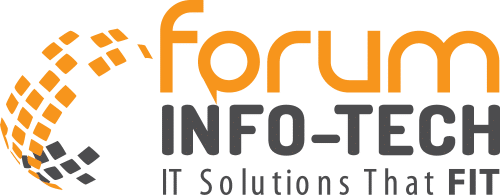Ensuring that your cloud infrastructure complies with various regulatory standards is not just a box-ticking exercise—it’s a lifeline for your business’s reputation and operational integrity. Use this guide to get you through the essential steps and best practices to make your AWS environment both secure and compliant.
Understanding AWS Security
AWS provides a robust security framework designed to protect your data and applications. At its core, AWS security encompasses several key components:
- Infrastructure Security: This includes physical and environmental controls to safeguard AWS data centers.
- Network Security: AWS offers VPC (Virtual Private Cloud) to isolate your resources, along with firewalls and security groups.
- Data Protection: Encryption for data at rest and in transit ensures your data remains confidential.
- Identity and Access Management: AWS IAM (Identity and Access Management) helps control who can access your AWS resources.
By leveraging these elements, AWS aims to create a secure environment for your applications and data, minimizing the risks associated with cloud computing.
What Is the Security Architecture?
AWS’s security architecture is built on a multi-layered approach, which means even if one layer is compromised, the other layers can still provide protection. Here’s a closer look:
Layered Security Approach
- Physical Security: AWS data centers are equipped with state-of-the-art security systems, including surveillance cameras, biometric access controls, and more.
- Network Security: AWS uses firewalls, intrusion detection systems, and VPNs to maintain cloud compliance.
- Application Security: AWS WAF (Web Application Firewall) protects applications from common web exploits.
- Data Security: This includes encryption, key management services, and secure data storage options.
This layered approach ensures comprehensive protection against a variety of threats, making AWS a reliable choice for businesses looking to maintain cloud compliance.
The Shared Responsibility Model
One of the most crucial concepts to grasp when using AWS is the Shared Responsibility Model. In essence, AWS takes care of the security of the cloud, while you are responsible for security in the cloud.
AWS’s Responsibilities
- Infrastructure: AWS manages the security of the cloud infrastructure, including hardware, software, networking, and facilities.
- Compliance: AWS ensures its infrastructure complies with various global standards and regulations.
Your Responsibilities
- Data: You are responsible for managing and securing your data within the AWS environment.
- Applications: Securing your applications, including patching vulnerabilities and monitoring for threats.
- Access Management: Implementing proper IAM policies and ensuring only authorized users have access to your resources.
Understanding this model is key to effectively managing your AWS environment and ensuring both security and cloud compliance.
Major Compliance Frameworks Supported by AWS
AWS supports a wide range of compliance frameworks, making it easier for businesses to meet regulatory requirements. Here are some of the major frameworks:
GDPR (General Data Protection Regulation)
GDPR mandates stringent data protection measures for businesses operating in the EU or dealing with EU citizens’ data. AWS offers tools and services to help businesses comply with GDPR requirements, including data encryption and access controls.
HIPAA (Health Insurance Portability and Accountability Act)
For healthcare organizations, HIPAA compliance is non-negotiable. AWS provides a HIPAA-eligible environment to help secure protected health information (PHI).
SOC (System and Organization Controls)
AWS undergoes regular SOC audits to ensure its controls meet stringent security, availability, and confidentiality standards, providing assurance to businesses that their data is secure.
PCI DSS (Payment Card Industry Data Security Standard)
For businesses handling payment card information, PCI DSS compliance is essential. AWS fulfills all the necessary requirements to help you achieve and maintain PCI DSS compliance.
How Does Cloud Compliance Work for Various Industries?
Different industries have unique compliance needs, making it crucial to understand how AWS can support these requirements:
Healthcare
In the healthcare industry, cloud compliance with frameworks like HIPAA is vital to protect patient data and maintain trust. AWS offers a secure environment for storing and processing PHI, helping healthcare providers meet their compliance obligations.
Finance
Financial institutions must comply with regulations such as PCI DSS and SOC to protect sensitive financial data. AWS provides a secure platform with the necessary controls to ensure compliance and safeguard customer information.
Retail
Retail businesses handling payment card information must adhere to PCI DSS requirements. AWS helps retailers meet these standards by providing a secure infrastructure and tools for managing cardholder data securely.
Legal
Law firms must adhere to strict confidentiality and data protection requirements. By leveraging cloud computing, law firms can confidently store and process sensitive client information while meeting compliance obligations.
Steps to Ensure AWS Compliance
Ensuring compliance in AWS involves several critical steps:
1. Conducting a Compliance Assessment
Start by assessing your current environment to identify any gaps in cloud compliance. This involves reviewing your security policies, access controls, and data protection measures to ensure they align with the relevant compliance frameworks.
2. Implementing Security Best Practices
Once you’ve identified any gaps, take steps to address them by implementing security best practices. This includes practices such as data encryption and access controls. You can also use AWS CloudTrail and CloudWatch to monitor your environment and log all activities for auditing purposes.
3. Utilizing AWS Compliance Tools and Services
AWS offers a range of tools and services to help you achieve and maintain compliance:
- AWS Config: This tool helps you assess, audit, and evaluate the configurations of your AWS resources to ensure compliance.
- AWS Trusted Advisor: Provides real-time guidance to help you follow AWS best practices for security and compliance.
- AWS Artifact: Offers access to AWS compliance reports, such as SOC and PCI DSS, to simplify your compliance efforts.
Best Practices for AWS Security and Cloud Compliance
Implementing best practices is essential to maintaining a secure and compliant AWS environment:
Data Encryption and Key Management
Encrypting your data is a fundamental security measure. AWS Key Management Service (KMS) makes it easy to manage encryption keys and control access to your data.
Role-Based Access Control (RBAC)
Implement RBAC to restrict access to resources based on user roles. This helps ensure that only authorized users can access sensitive information, reducing the risk of data breaches.
Least Privilege Principle and Identity Federation
Apply the principle of “least privilege”, which means that users should only have access to the minimum permissions required to perform their tasks, limit user access to applications, and limit authority within the organization. Identity federation allows you to manage user identities across multiple systems, simplifying access management.
Simplify Cloud Compliance with Forum Info-Tech
Achieving and maintaining compliance can be overwhelming, but with the right knowledge and tools, it doesn’t have to be. Forum Info-Tech offers comprehensive AWS consulting services to help businesses navigate the complex world of the cloud.
Contact us today to learn more about how we can help keep your business safe and efficient in the cloud!

